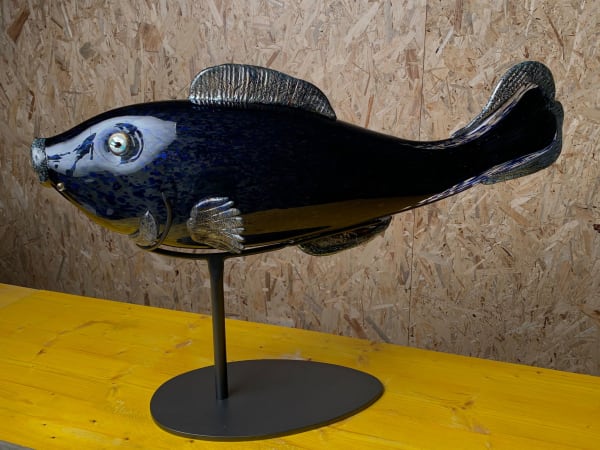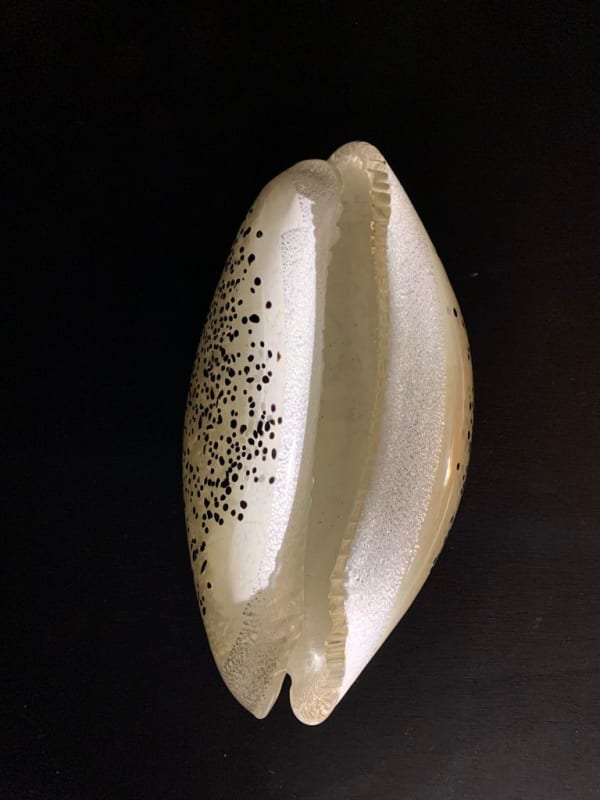VENICE GLASS WEEK: Palazzo Contarini Polignac, Venice, Italy
After eighteen months of Covid, fish never seen before arrived in the lagoon. They came from far away, they have crossed seas that are finally pure. There are those who have recognized Atlantic and Caribbean species in our small Mediterranean. The first to identify them was Hugh Findletar, a Jamaican from the Greater Antilles who grew up with these fish as a child, swimming with them, fishing them, eating them.
The artist, now honorary Murano, a Mazzorbo came across the green moray (Gymnothorax funebris), a Torcello, the comb moray (Murena melanothis), a Burano, the Selene sunfish (Selene vomer), a San Francesco del Deserto, in the queen triggerfish (Balistes vetula), a Mazzorbetto, in the surgeonfish (Acanthurus surgus) and finally, a Murano, in the Caribbean batfish (Chetodipterus faber) which fortunately does not cause the havoc of Wuhan pi. The absence of large ships in the lagoon has helped the rebirth of almost forgotten marine flora and fauna.
Hugh Findletar immortalized this historic event with his glass sculptures. Soon the waters will be polluted again, and the fish will return to Saint Vincent, Aruba, Cuba. Here are these vitreous creations displayed on an eight-meter table in Palazzo Polignac, Venice. There are also the splendid shells of the Strombus family, an anarchist family; there is no shortage of cauris which until ninety years ago were also used as hard cash.
Who passes between these sculptures feels in the sea, a sea with a distant perfume. Here and there, as cardinal points, the now-famous FLOWERheadZ of Findletar appears, where glass and nature irresistibly attract the viewer.
Text by Jean Blanchaert









